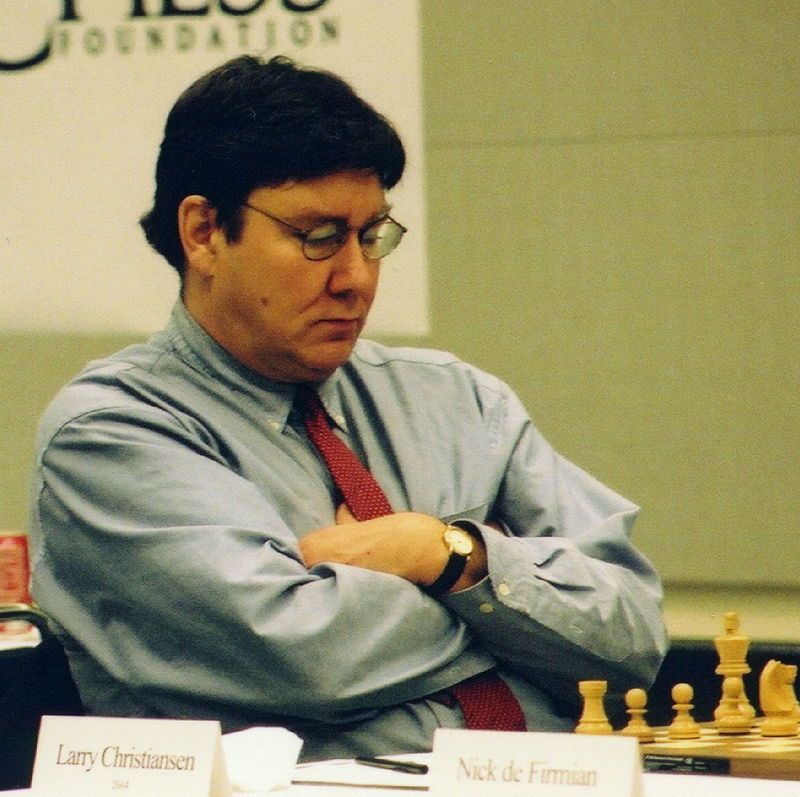
5 Grandmaster Tips To Improve Your Strategy
In my last article, I gave you five tips to improve your tactics. If you did your homework and practiced your tactics (either Tactics Trainer, or my Chess Genie app) you will see the benefits right away!
However, learning strategy is completely different. What is chess strategy? Unlike tactics, which is usually a one-two punch, strategy is about long-term goals. You need to think about positional factors and come up with strategic plans that sometimes extend all the way to the endgame.
I hope these five simple tips will help to improve your strategic thinking! (Full video of this article: here.)
Tip #1: Fight for the center!
As beginners, we are told to put our pawns and pieces in the center. Yet, I see experienced players and even GMs disregard this basic advice. Just take a look at this position from the recent Battle of the Legends between Garry Kasparov and Nigel Short:

In the above diagram, something clearly went wrong for Black. White has a big space advantage thanks to his pawn center: c4-d5-e4-f3. Black has no counterplay with a dead bishop on b7, doubled pawns on the c-file and passive knights.
Can you find a way for White to secure an even bigger edge?
The rest is very instructive. Replay through the whole game and see how White kept building up his space advantage right through the endgame.
Tip #2: Pay attention to pawn chains!

Pawn chains are important, as they tell us what side of the board to play on. Take a look at this position also from the Kasparov-Short match:
This is the most common pawn chain that we get from many openings. Can you answer these questions: What is White's plan? What is Black's plan?
The answer to these questions is quite simple: just look at where the pawn chain is pointing! White's pawn chain: b2-c3-d4-e5 is pointing to the kingside; therefore White's plan is to attack the king.
Whereas Black's pawn chain: f7-e6-d5 is pointing at the queenside, so Black should try to seek counterplay there via a typical b5-b4 pawn break.
Replay the whole game and watch how Kasparov executes his plan and pries open the enemy king!
For more on pawn chains and pawn structure, check out: the full video here.
Also, take a look at my videos on the Torre Attack and Stonewall Defense.
Tip #3: Exploit pawn weaknesses!
One of the biggest differences between grandmasters and masters is when they push a pawn. A GM will think twice about every pawn move and try to answer these questions:
- Will it create a weak square?
- Will it weaken my king?
- Will it worsen my pawn structure in the resulting endgame?
These are important questions as pawn is the only piece that cannot go backwards!
Take a look at the following game, where my young opponent got in trouble after making an ambitious pawn move on the kingside:
Perhaps the most instructive example is how masterfully Akiba Rubinstein exploited the doubled pawn by simplifying into a winning king-and-pawn endgame.

Tip #4: Exploit weak squares!
You've already seen from my game vs Uesegi how White's pawn push 19.g4? weakened the f4 square. Now let's see Nigel Short redeem himself from the Kasparov fiasco and execute a brilliant strategic idea by exploiting a weak square using his king!
Tip #5: Improve your worst piece!
What happens when you're in a complex middlegame and don't have a clear target? Find your worst piece and improve it! You can do it simply by trading it off or repositioning it on a better square.
I learned this lesson the hard way during a penultimate round of the 2006 U.S. Chess Championship against the famous American GM, Larry Christiansen.

In the following position, can you find a way to improve Black's knight on a5?
While the above tips are key positional factors to look for during the game, they are by no means the only factors. Remember, chess is a complex game and you need to weigh the pros and cons of various elements to make the right decision.
For example: initiative vs bad pawn structure, time (tempi) vs material advantage, two bishops vs weakened king, etc.
However, if you follow the above tips, you will make better decisions both in the opening and in the middlegame, and you will improve your game long term.
But be careful, you may start winning more games, which is usually good unless you play a Wookiee ![]()
